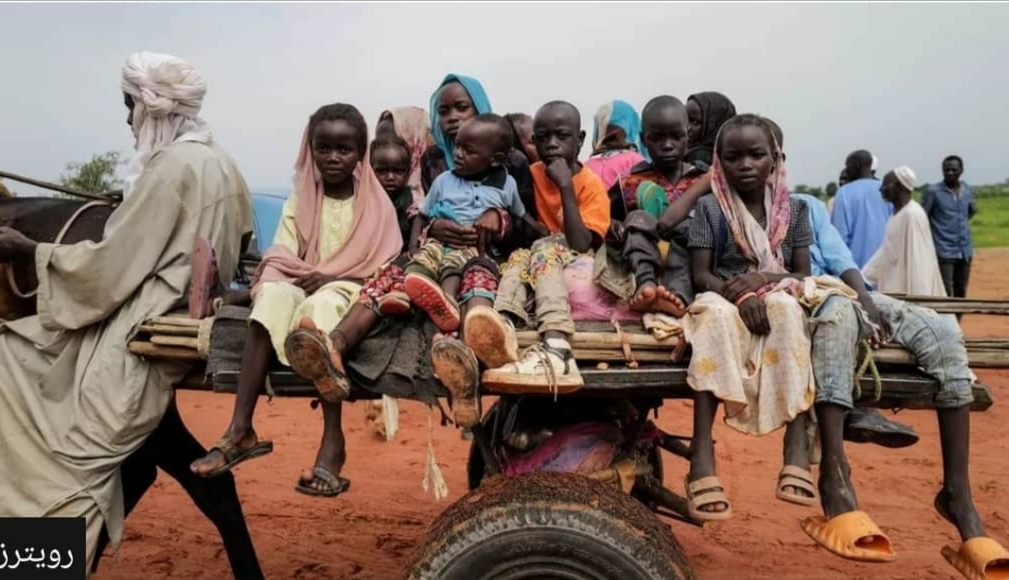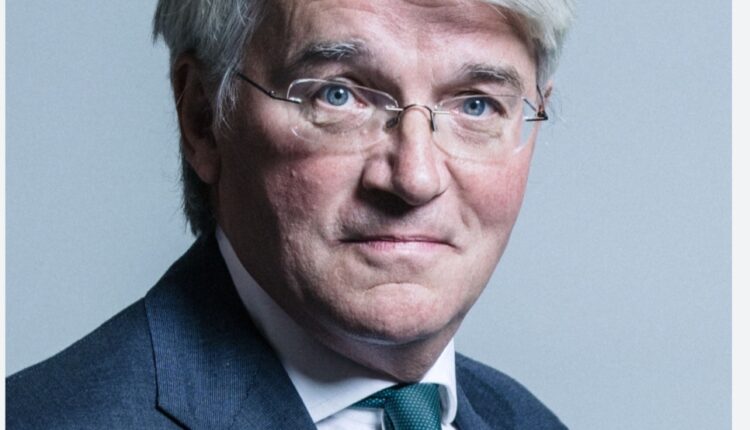Sudan conflict: Ethnic cleansing committed in Darfur, UK says
The UN estimates some 5.4 million people have fled their homes since fighting broke out in April.
IMAGE SOURCE,REUTERS
By James Landale
BBC diplomatic correspondent
The BBC has seen new evidence of the brutal ethnic violence that has swept western Sudan since fighting broke out between two rival military factions in April. Analysis of satellite and social media data reveals at least 68 villages in Darfur have been set on fire by armed militias since the civil war began.
The UK Minister for Africa, Andrew Mitchell, told the BBC this bore “all the hallmarks of ethnic cleansing”. It is the first time the British government has used the term to describe what is happening in Sudan.
Gen Abdel Fattah al-Burhan, who leads one side in the conflict – the Sudanese Armed Forces (SAF) – told the BBC he would co-operate with the International Criminal Court (ICC) to bring those guilty to justice.

Much of the ethnic violence is blamed on militias which are part of – or affiliated to – the Rapid Support Forces (RSF), the paramilitary group fighting the SAF for control of the country.
The RSF has repeatedly denied any involvement in the violence in the region and has called for an independent international investigation.
The analysis has been carried out by the Centre for Information Resilience (CIR), a research body partly funded by the British government, which is gathering open-source evidence about the fighting in Sudan.
They use Nasa heat-recognition technology to identify fires. They look at satellite images to detect smoke and burned-out buildings. They match all that with images from the ground on social media, which are geolocated using maps and photos.
The latest verified fires were in a village called Amarjadeed, in southern Darfur, where Nasa and satellite imagery showed burn scars between 18 September and 9 October.
This is how the CIR established how one convoy of militia set fire to at least nine villages on one day, 16 August.
On August 16, satellite images show heat signatures coming from several villages in the region.
IMAGE SOURCE,NASA
Image caption,
On 16 August, satellite images show heat signatures coming from several villages in the region
First it used Nasa heat-recognition technology to identify the possible location of fires.
Then it used satellite imagery to establish whether any of these fires were associated with any known population settlements.
The CIR scoured social media emanating from western Sudan that showed militias torching villages, as well as looting grain, TVs and vehicles.
They listened to what the fighters were saying – and examined what they were wearing – to try to identify who they were. The white ribbons some of the militia were wearing indicate they belong to the Bani Halba Arab group, which is loosely affiliated to the RSF.
In videos posted on social media, the militia are seen wearing white ribbons as an identification.
IMAGE SOURCE,UGC
Image caption,
In videos posted on social media, the militias are seen wearing white ribbons as identification
The social media pictures were geolocated, matching what was shown with identifiable mountains and buildings.
All this established that fighters began the day setting fire to the village of Buro, before moving north to do the same at Awstani, and then east to other villages.
Satellite pictures taken after the attack on 16 August show the blackened remains of the village of Buro
Image caption,
Satellite pictures taken after the attack on 16 August show the blackened remains of the village of Buro
“The scale of what we’ve been able to document is bigger than what we’ve ever seen before,” says Ben Strick, CIR’s director of investigations.
“We’ve documented 89 fires, which damaged 68 villages since 15 April, which is a huge amount. In some of these, it is small buildings that have been targeted. But in some of them, whole villages that have been wiped out. That scale is enormous when we think upon the impact on civilians.
“What we’re seeing is a pattern of abuses, a pattern of villages being burnt, one after the other, specifically in Darfur, which is where we’re seeing some of the heaviest violence outside of Khartoum.”
Sometimes this is part of infighting between rival Arab groups, other times it is Arab fighters targeting non-Arabs, like the Massalit, the largest local ethnic group centred on the capital of West Darfur, El Geneina.
Amin Yakubu and his family were forced to leave his home in Darfur when Arab militias attacked.
“We were together one morning in my home, we’d just left the mosque, when a rocket-propelled grenade exploded. My friend’s neck was broken, and he lost his life.”
Amin Yakubu
Image caption,
Amin Yakubu says he believes no-one is left in his town
He stepped over bodies to escape, and still does not know where all his family are. He spoke to the BBC from a refugee camp in eastern Chad, which he managed to reach last month.
“The conflict has become an ethnic one. But everyone is equally affected. No-one sleeps at night,” he said.
“Everyone has to lie flat on the floor all night long, because of the gun battles. Right now, everyone has left our little town. No-one is left there as far as I know.”
Twenty years ago, hundreds of thousands of people were killed in Darfur amid fighting between non-Arab rebel groups and a militia known as the Janjaweed, which later grew into the RSF. Some Janjaweed leaders and even the president at the time, Omar al-Bashir, have been indicted by the ICC on charges of genocide and crimes against humanity, which they have denied.
It is feared that similar atrocities are being committed in the region once more, along the same ethnic fault-lines.
“What is happening in Darfur is that innocent people are being attacked by militias, particularly by the RSF. They are being hounded from their homes and murdered, women are being raped and attacked, houses are being burnt, crops and cattle destroyed,” Mr Mitchell said.
“This has all the hallmarks of ethnic cleansing. And it’s going on just as it was back from 2003 onwards. It’s going on in the same way today, if anything with even more ferocity.”
The United Nations is equally concerned.
Clementine Nkweta-Salami, the UN’s humanitarian co-ordinator in Sudan, has said: “As the fighting spreads, we are receiving reports of increasing cases of sexual and gender-based violence, enforced disappearances, arbitrary detention and grave violations of human and children’s rights.”
The UN estimates that 1.2 million people have fled to neighbouring countries since April
IMAGE SOURCE,REUTERS
Image caption,
The UN estimates that 1.2 million people have fled to neighbouring countries since April
The aim of the London researchers at the CIR is to gather evidence that could one day bring those responsible to justice. Their website – containing what they have discovered – will be public and constantly updated.
In a recent interview in New York, Gen Burhan told the BBC he would support anyone or any group which helped bring what he described as “these criminals” to justice.
“We feel responsibility towards the Sudanese wherever they are, be it in Darfur, in Khartoum or any place where they were exposed to the aforementioned crimes,” he told me.
“We have the desire to co-operate with all, even the International Criminal Court. We can co-operate to present these perpetrators of crime.”
At least 7,000 people have been killed since the fighting began.
The UN says more than five million have been forced from their homes, with many leaving for safety outside Sudan. It also says about half the population – some 24 million people – are in need of humanitarian support.
There are fears the fighting could spill over into neighbouring countries and fuel regional tensions. There are also concerns it could become a proxy conflict, amid reports the United Arab Emirates has been giving weapons to the RSF, something Emirati officials have denied.

